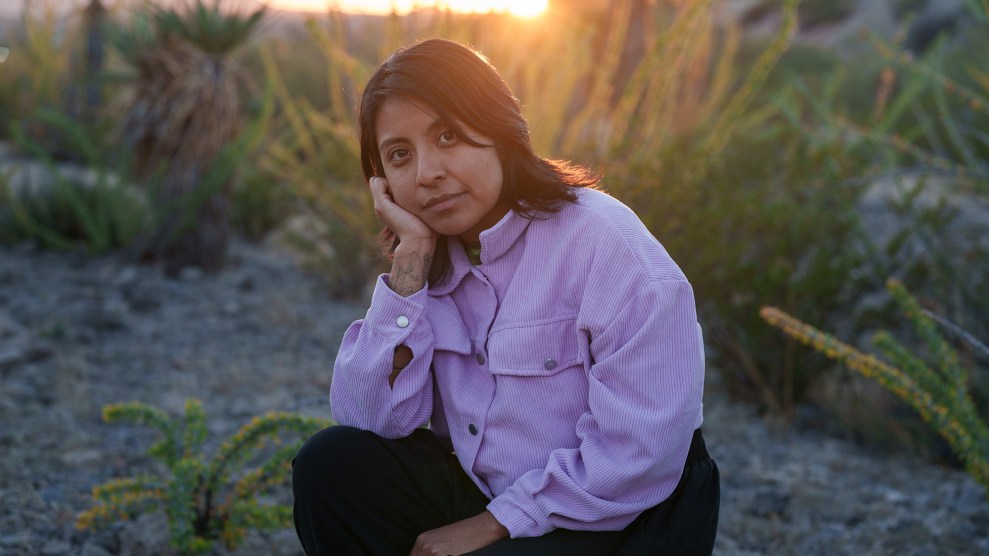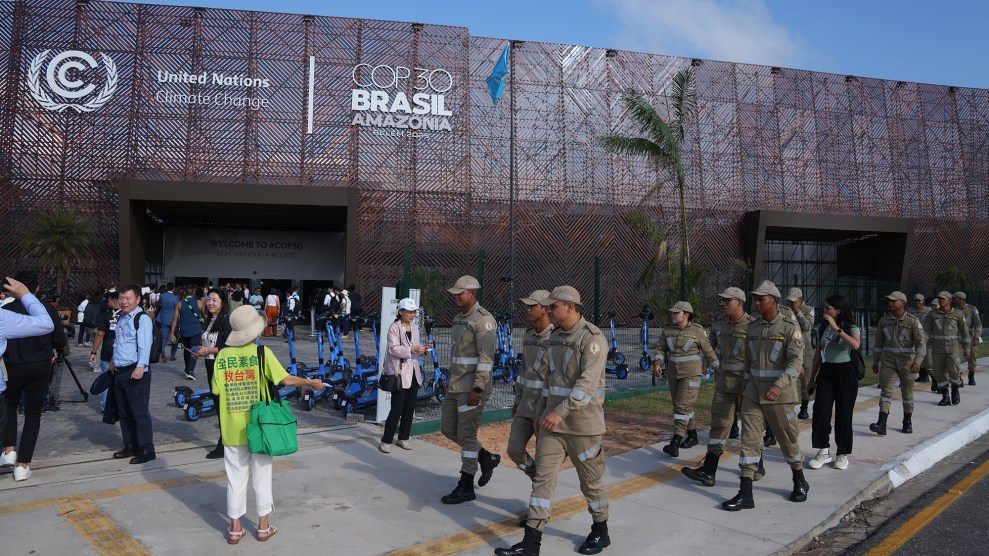They were brothers raised in the same house — same parents, same school — but very separate hells. The mother adored the older son. She never walked by him without a touch on the head or a stroke down one arm. The father hated the sight of the boy; he could hardly walk by without taking at least one good punch at the child. The boy had his mother’s fair coloring, but the father thought he saw another man’s face in the boy’s features. In his view, only the younger son was acceptable. Dark hair, olive skin like his; the boy looked right. The father never laid a hand on the second son. Yet neither, if she could help it, did the mother. She’d turn away when the little boy spoke, flinch when he touched her.
“It was as if she were taking out her anger on the child because he didn’t have the hell beaten out of him like the older boy,” says Bruce Perry, chief of psychiatry at Texas Children’s Hospital in Houston. “She just ignored him. Wouldn’t talk to him, tease him, hold him, comfort him. She’d say, Looks like his father, acts like his father.”
Both boys were referred to Perry’s clinic. They were ages 8 and 6 and already in trouble. They first appeared to be a matched set, united in their hostility, aggression, and determination to push others away. But over time, Perry and his colleagues began to see a difference. The older boy would occasionally smile back, meet their eyes. The younger boy just flat out wasn’t there.
“The 8-year-old had better social skills to start with, and we were eventually able to make him see that the beatings were not his fault. With counseling and with some medication he got better. But the other boy never got better. He never had friends; he couldn’t find pleasure in people. We couldn’t get through.”
Up until then, Perry, who is also a research professor in child psychology at the Baylor College of Medicine, had focused on the impact of violence and trauma on a child’s brain, working with children from the most dangerous communities in Chicago and with children of the Branch Davidian cult in Waco, Texas. To study these brothers, watch them struggle, and see that the most damaged child was not the one who’d been physically beaten came as a surprise. “I thought, ‘Whoa, I’ve been missing something here,'” Perry says.
The three great sins against children — those that invoke the law, bring down the wrath of the community and the hounds of child protective services agencies — have an unwritten hierarchy: Physical abuse and sexual abuse come first, and then, oh yeah, there’s that neglect thing.
It’s not that people don’t take neglect seriously. More than half of the 3 million-plus children who end up in agency files every year are there because they were unwashed, unfed, untreated for illness, unwanted. Spectacular neglect cases even make headlines.”Remember that horrible case in Wisconsin last year, the little girl in the cage?” asks Susan Rose, a professor at the School of Social Welfare at the University of Wisconsin in Milwaukee. The parents, from the small town of Brillion, kept their 7-year-old daughter in a dog cage in their basement. Both are now in jail after their 11-year-old son walked barefoot through the snow to the police and turned them in.
But by and large, neglect is back-page news. In fact, the judge who handled the Brillion case handed down relatively light sentences, pointing out that, in his opinion, the child did appear difficult to handle. Rose has been investigating the way workers in child protective services view neglect, and why they seem less concerned about it than about other forms of abuse. “Part of it,” says Rose, “is that they get inured to what they’re looking at. It’s more or less like being in a war zone. They see kids who are really severely neglected and, OK, that’s bad, but it doesn’t look as bad as the battered child they saw just before.”
Yet a growing number of researchers, including Perry and Rose, are finding that neglect may in fact be worse in its long-term impact on a child than physical or sexual abuse. In a study published in the journal Developmental Review, Penelope Trickett, a childhood abuse expert at the University of Southern California, compared the developmental consequences of physical abuse, sexual abuse, and neglect. She looked at toddlers and elementary, middle, and high school students, studying learning delays, social problems, and hostile tendencies. Neglected children tended to be withdrawn and anti-social, not only with their parents but with other children. They weren’t the angriest or the most aggressive, but even as toddlers, they were exhibiting signs of trouble ahead. Like abused children, neglected toddlers had learning delays, particularly in language skills. By elementary school, they had the lowest grades and test scores, the highest teacher ratings of learning problems, grade repeats, and school absences. More than that, they showed no signs of pulling ahead.
Trickett found the same pattern among the middle and high school students. “I was surprised that neglect was so much worse,” she says. “Most of my work has been in physical and sexual abuse, and I just expected the bottom to be there. Perhaps we’ve been so focused on psychopathology, we haven’t been paying attention.”
Indeed, when Perry searched six major journals for articles on the consequences of neglect, a database of 7,000 articles, he found only 30 citations. “Does that make sense to you?” he asks. Pediatric textbooks, he points out, devote far less space to neglect, which affects hundreds of thousands of children, than to obscure genetic disorders, which may involve just a few thousand children. Ironically, neglect is the most common form of child abuse, accounting for 52 percent of all victims; physical abuse accounts for 24 percent, and sexual abuse another 6 percent. The remainder is a combination of medical abuse, emotional maltreatment, and unidentified factors.
The challenge is not simply recognizing that neglect is harmful but recognizing it at all. No one has to debate the definition of a broken arm or bruised eye. But even professionals wrestle over the many, subtle, and often varied ideas of what constitutes neglect.
“One of the issues that’s held us back is the question of how to frame the issue,” Perry says. “When we think of neglect we think of dirty kids who haven’t been given enough food. We need to challenge people to think from another perspective. As children develop, they need different kinds of experiences — and I mean need — at different points in their lives. Neglect, simply, is the absence of those experiences at the time the child needs them.”
Without affection, attention, social interaction, and a give-and-take between caregiver and child, the brain won’t develop properly. A surprisingly small amount of parental indifference can generate surprisingly large problems.
“It is neglectful for an upper-middle-class family to take a 3-month-old, at the cost of holding and rocking and cooing, and put him in front of an educational videotape,” Perry says. “That’s neglectful, robbing that child of necessary somatosensory experience.”
Perry offers another scenario of neglect: “You smile at your mother. She doesn’t smile back. You want to be hugged. She pushes you away. You ask her a question. She won’t look at you. And so you’re taught that smiling gets you nothing, that people don’t want to look at you.”
He asks, “Have you ever talked to one of these neglected children? They don’t know how to respond to you. It’s as if where all that should be, where the brain should have stored that information, they’re hollow.”
Perry even has physical proof of this damage. He has a slide of the brain of a child whose parents completely shut him out — global neglect, he calls it. The ventricles, natural hollow chambers in the brain, appear as big black patches. They’re meant to be small at this point in development, but in Perry’s slide, they are tripled in size, filled with fluid because the surrounding brain didn’t grow to its full potential.
He hopes such images will help solve the dilemma, pinpointing when a child is being harmed by his parents’ indifference. Eventually, he says, we might be able to diagnose neglect by examining brain development.
That possibility has given new energy to those arguing that neglect must be taken more seriously.
Researchers have long known that in social species a lack of parental care and affection creates a host of dysfunctional behaviors. Only recently have neuroscientists begun trying to work out the brain architecture behind such behaviors. Some of this derives from studies of rats, notably by William Greenough, a psychology professor at the University of Illinois at Urbana-Champaign.
Greenough showed that baby rats raised in a healthy but sterile environment — plenty of food and water and clean bedding but no companionship or toys — showed up to 25 percent less growth in their synapses (the connections between the nerve cells in the brain) compared with those rats that grew up with companions and an ever-changing menu of toys, puzzles, and mazes to figure out.
And this is exactly Perry’s point. “The brains of children are use-dependent,” he argues. They grow properly when given what they need. And that’s a lot more than just clean clothes and food on the table.
One of the most provocative studies along this line was done recently by Geraldine Dawson, a psychologist at the University of Washington in Seattle, who looked at the children of severely depressed mothers — women who provided very little engagement or positive reinforcement to their infants. She found that, at 14 months, many of those babies had reduced brain-wave activity in the left frontal lobe of their brains. That region of the brain is associated with positive feelings such as happiness and curiosity. “When certain brain cells are stimulated,” Dawson explains, “they become more responsive.” By age 3 half, the children in Dawson’s study whose mothers remained chronically depressed had a slew of behavioral problems, including withdrawal, aggression toward others, crying episodes, and disobedience.
A third study in Minnesota examined how these children fare over the long term. The Parent-Child Research Project began in 1975. Byron Egeland, Martha Farrell Erickson, and their colleagues enrolled 267 women who were in their last trimester of pregnancy. Their now-twentysomething children are still being tracked. Out of the group, the team of psychologists identified 24 mothers as being neglectful, 19 of whom stood out as emotionally remote, or what researchers call “psychologically unavailable.” These women didn’t like to cuddle, play with, or talk to their children.
And it was their children who stood out dramatically from the others. As part of the project, the psychologists spent hours interviewing preschool and kindergarten teachers. Erickson would ask about the children in the study, never saying who was neglected, abused, nurtured. Consistently, the children singled out as having learning problems — those the teachers considered inattentive, uninvolved, overly passive, anxious, or impatient — were the neglected children.
And there was something else. They were also the most unpopular children — and not only with their fellow students. The teachers didn’t like them either. “They’d say, I’m always glad when he’s not in class,” Erickson recalls. “And they were talking about these emotionally neglected children. And so it starts looking like a cycle.”
Erickson explains why the problem is so severe. “Other kinds of abuse are episodic,” she says. “In between the bad episodes, the children usually get some attention and even some nurturing. But, from what I’ve observed in families, emotional neglect is chronic. And if children are emotionally neglected in the first two years — when the family is the child’s whole world — then there are going to be striking consequences. It’s hard to see because these children will eventually just act as if they are fine, as if they don’t need anyone when, really, they’ve shut down.”
The effects of neglect, it turns out, are cumulative. As Erickson points out, it’s not the occasional TV babysit or late-night workday that has impact. It’s when it happens every day. “Neglect just slowly and persistently eats away at the child’s spirit until she has little will to connect with others or explore the world.”
According to Maureen Black, a professor of pediatrics at the University of Maryland in Baltimore, the greatest risk factor for severe neglect is poverty. But obviously, it’s not the only one. Poor families get reported more often, not just because they lack resources but because they tend to be more visible to public service agencies. Other risk factors for children — parents who abuse drugs or alcohol, parents who are depressed, parents in bad relationships, parents who are just too busy to pay attention — can be found at any income level.
Yet neglect, she admits, is still a difficult issue for agencies to handle. It is, after all, an act of omission, making it near invisible. Without the obvious evidence that physical or sexual abuse provides, many people hesitate to intervene. One 1983 study found that hospitals failed to report more than half the cases of obvious neglect to child welfare authorities. “Bizarre as it is,” Black says, “children are better served if something momentarily bad happens because they will get intervention. If a child gets a broken leg, some sort of injury, that child is going to get attention. The emotional problems, the lack of adequate care, the lack of supervision — it’s very difficult to make a case.”
When it comes to issues such as “psychological unavailability,” says the Minnesota project’s Egeland, child protective services criteria have failed to catch up with the current research. “We don’t define [emotional] neglect in terms of long-term outcome because policymakers and politicians don’t have the foresight to do that,” he says.
Egeland is inclined to turn sarcastic over the gap between the researchers’ findings and the country’s social service policies. Imagine, he says, calling child protective services to alert investigators to an unsupervised toddler. Or imagine this call, beginning: “I’ve found a child who’s watching TV for 16 hours a day, and I’m concerned that he’s being emotionally neglected.” Even with all the work by researchers showing such neglect matters, he says, he suspects the agency’s response will be simple: “They’ll hang up on you.”
Adds Egeland, “Maltreatment is a huge risk factor for many kinds of pathologies — depression, suicide, conduct disorders, learning disorders — and it just blows me away sometimes that we don’t talk about it in terms of prevention.”
Perry has prevention on his mind as well. He’s been tracking the troubled family, the two brothers, for more than five years now. The older boy continues to make gains, but not the younger one.
“The younger brother,” says Perry, “is very distant, has no friends, is generally compliant but will have episodes of predatory and violent behaviors.” Usually, he directs this anger toward younger children or animals, says Perry, and shows very little remorse afterwards. Perry notes that the boy has other problems, too. “He steals little things in school, he doesn’t laugh very much — it’s a pretty sad picture.”

















